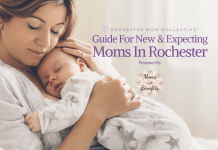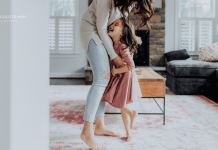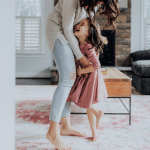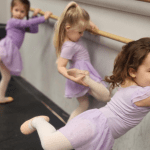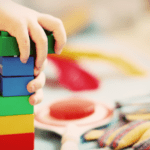
What a time to be alive! Now more than ever, the public at large is making a conscious effort to be more inclusive of people who are differently abled. Accommodations such as wheelchair ramps, closed captioning, and braille signage are commonplace. When you consider the fact that the American with Disabilities Act (ADA), the world’s first comprehensive civil rights law for people with disabilities, is only thirty-three years old, it really puts it into perspective. As a nation, we still have a long way to go before we reach full equity but, as the mother of several neurodivergent children, I appreciate the effort our society is putting forth.
While I recognize the larger systemic issues that prevent full inclusion, I am also cognizant that there are other, smaller obstacles for the average person who is just trying to do the right thing. It can feel like the rules are always changing and that can make it hard to know just what the right thing is to do. How can we know for sure how exactly individuals with special needs want to be helped and included? There is no simple answer.
Part of the problem is that minorities are not monoliths. Just because some people happen to share a common trait that puts them together in a particular group, it doesn’t mean that they are all the same. This is compounded by the fact that we are asking these marginalized groups of people for the first time in history their opinions about how they want to be treated. For so long, people with disabilities had no rights. Caregivers, at the suggestion of medical professionals who were just as uninformed, would have their family members placed in facilities to languish for life. Certainly nobody ever asked them what accommodations would best support them. Now that they finally have a voice, do we really expect only one voice with one uniform answer? Naturally it would be more realistic to expect different opinions. For example, if you polled a group of die hard Major League Baseball fans, they would not all agree on the best baseball player of all time, would they? (It’s Cal Ripken Jr., by the way.)
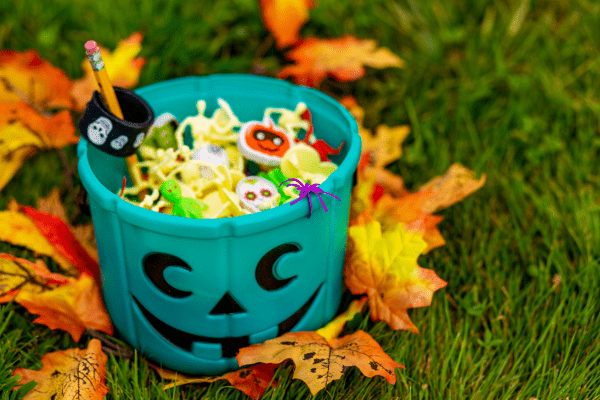
A Tale of Two Pumpkins
A few years ago, a mother in Louisiana was brainstorming ways to help her son enjoy the Halloween holiday which was his favorite time of year. He had Autism Spectrum Disorder (ASD) so although his chronological age was twenty-one, he was developmentally much younger and still wanted to participate in trick-or-treating. She came up with a simple yet effective solution. She wrote a note to her neighbors to request that, if they saw a young man with a blue bucket trick-or-treating, they not turn him away for being “too big” but understand that he had ASD and allow him to take part in the festivities.
When other parents heard this, many thought it sounded like a great idea. It was an easy yet discreet way to alert other adults to their children’s special needs while simultaneously allowing the children to participate in the holiday activities to the degree to which they were able. Parents hoped that this would afford their children the understanding and compassion that they didn’t always receive from strangers. If their child came to a door but did not say anything due to differences in communication skills or if they were unable to wear a costume due to sensory needs, they could still receive candy like any other kid without any hassle.
The concept took off. Soon, major chain stores were selling blue buckets at Halloween, marketed as a stand in solidarity with ASD families. This was a big step towards inclusivity that they’d all been hoping for, right? The response is once again complicated.
As quickly as the blue bucket trend gained popularity, it also received backlash. Adults with ASD in particular spoke out against the idea. It was noted that children with Autism may not want to advertise their neurodivergence with a special blue bucket. Also, there were plenty of other children with different disabilities who do not communicate in a typical way. Should they carry a blue bucket, too? Or should they carry a bucket of a separate color to signify their particular diagnosis? Should every child have to carry a different colored trick-or-treating bucket to announce to the world that they are disabled in order to receive a small amount compassion from other people? That didn’t feel very inclusive.
And then there was also the confusion with the Teal Pumpkin Project. For the past decade, a different movement involving a teal-colored Halloween bucket had gained traction, too. Families were encouraged to leave a teal pumpkin pail out with non-edible treats for trick-or-treaters with food intolerances or allergies. Just like the blue bucket concept, it started with the intention of inclusion, not to mention that it could literally save a life. However, the two concepts sound similar enough to the average person and since most Halloween activities happen at night, it could be very easy to mix up the colors.
So how can we make trick-or-treating inclusive for people of all abilities?
We often see situations like these, where well-meaning people try to be inclusive but it ends up being accidentally inconsiderate or interpreted as insensitive. Then when there’s backlash, the people who made the attempt are left feeling embarrassed and maybe even a little defensive. Then a debate ensues as to whether or not intention alone is enough. Do we expect people with disabilities to be grateful for whatever considerations are given or we demand standards for those considerations?
Maybe the answer doesn’t need to be a grand gesture or movement. There are small things that all of us can do to create a culture of respect for individuals with different needs and abilities. Take Halloween, for example. Here are some simple suggestions for making this holiday inclusive.
- Offer a variety of tricks and treats. Traditional candy is fine (and delicious!) but there are other goodies that are just as cheap and easy to provide that might allow more children to partake. Consider offering something like fruit snacks which are dairy- and gluten-free. Include non-edible treats such as pencils, stamps, stickers or bubbles. You can put them in separate bowls if you’d like, or you can put them all in one bowl and let the children or parents choose.
- Keep the pathway to the front door clear. For many, Halloween decorations can heighten the experience of trick-or-treating. Some people like them kitschy or outlandish, some like them scary or gory – there’s no wrong way to do them! One small idea to consider in the name of inclusivity would be to make sure none of the decorations are in the way of the trick-or-treat bounty. This way those with sensory needs can peacefully walk straight to the treats without hinderance. So display them loud and proud on your lawn, in trees, on your window, etc. but just keep your walkway clear.
- Just give out the treats. Halloween is a holiday for children. It shouldn’t matter if they don’t say “Trick-or-treat!” It doesn’t matter if they’re not in costume. It doesn’t matter if they are from one of those neighborhoods. It shouldn’t matter if they appear too old. Children shouldn’t have to earn the privilege to participate in the holiday by following arbitrary rules. If it brings them happiness, let’s not be the gatekeepers of joy.
It’s much simpler than worrying about different colored candy buckets or porch lights. I bet you were already doing most of these things, or at least a version of them! A few small considerations is all it takes to demonstrate kindness and respect and, in turn, teach your own children about inclusiveness. Happy Halloween, everyone!



